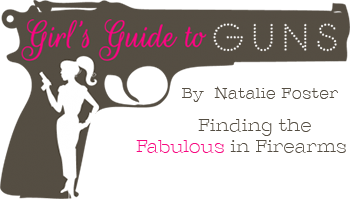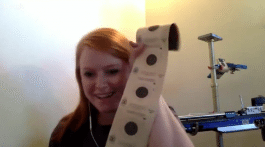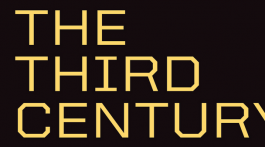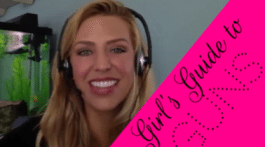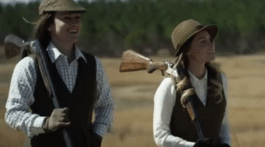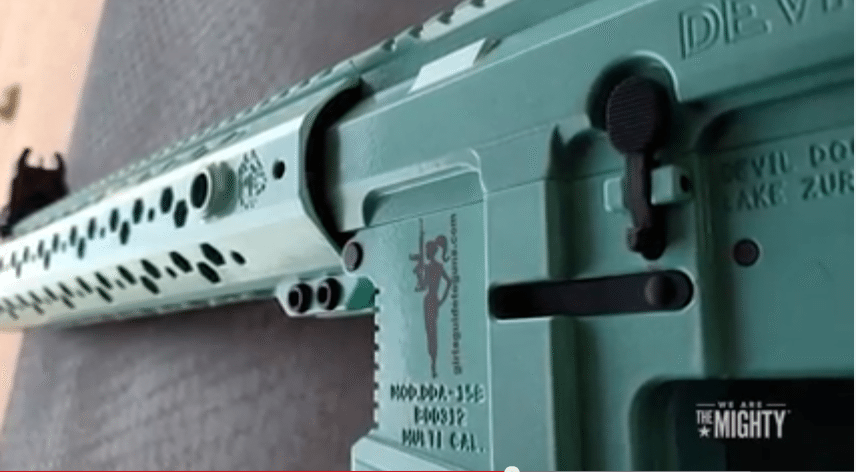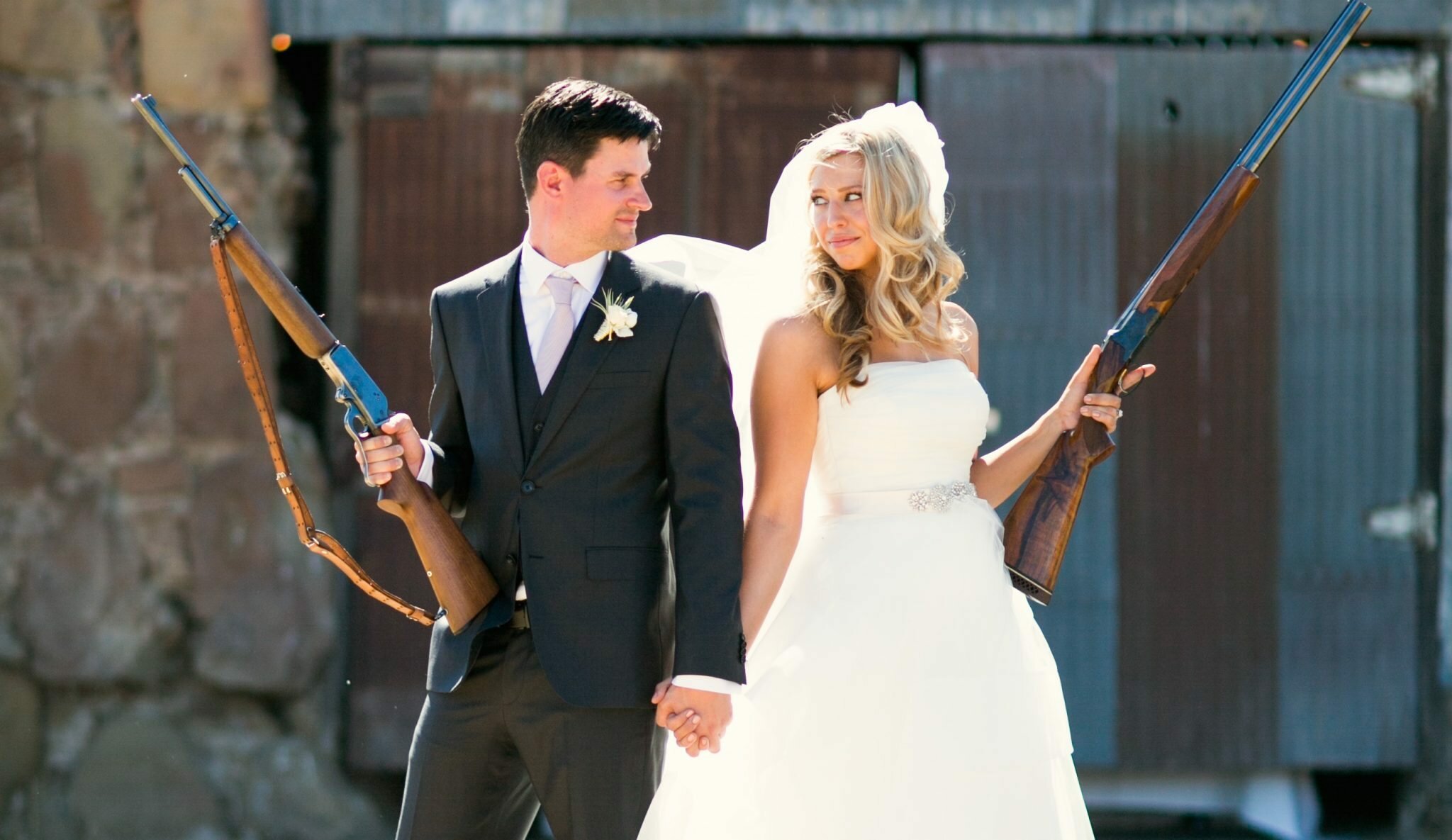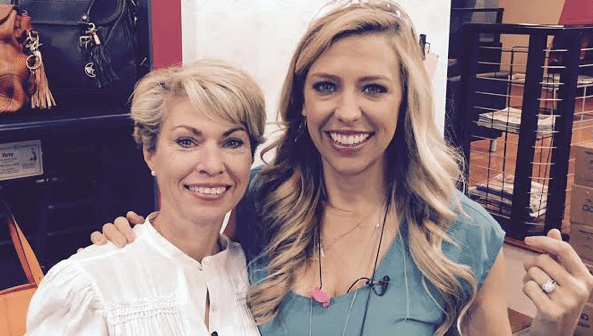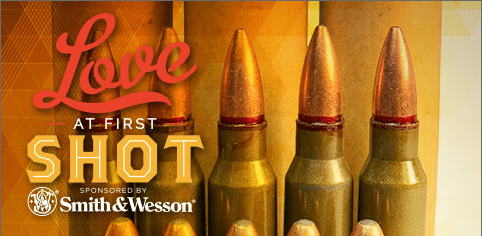 My relationship with guns had been going pretty well lately and it was time to take it to the next level of commitment. I decided I wanted to get my concealed handgun license. I scoped out the latest holsters, purses and clothing in the concealed carry department at SHOT Show and soon I had visions of becoming a secret agent and dreams of pulling a weapon on a bad guy while he was trying to steal a sweet old lady’s purse. I wanted to look unassuming on the outside, but give a would-be assailant a “try your luck, Slick” look (and mean it) just like Sandra Bullock’s LeAnne Tuohy in The Blind Side. Great movie, by the way.
My relationship with guns had been going pretty well lately and it was time to take it to the next level of commitment. I decided I wanted to get my concealed handgun license. I scoped out the latest holsters, purses and clothing in the concealed carry department at SHOT Show and soon I had visions of becoming a secret agent and dreams of pulling a weapon on a bad guy while he was trying to steal a sweet old lady’s purse. I wanted to look unassuming on the outside, but give a would-be assailant a “try your luck, Slick” look (and mean it) just like Sandra Bullock’s LeAnne Tuohy in The Blind Side. Great movie, by the way.
So I spent an entire Saturday at the range. Theoretically that should be fun, right? Rather than practicing my aim, however, I was learning more rules. Now, obviously, obeying rules is incredibly important when it comes to handling guns. And while listening to rules and stories may not exactly qualify as fun, it is much more important than perfecting your aim. Where I live in California, it is almost impossible to carry concealed legally. I chose, instead, to take the Utah concealed handgun class because I travel enough to make it worth it, even if I can’t carry in LA. Utah’s certification process holds reciprocity with 33 states, and fortunately for me, they provide classes out of state. The length of the class varies depending on how many people attend as well as the instructor’s personal caveats, which in our case were well worth it.
Items either learned or reinforced during the class:
- First and foremost, TRAIN. When you do, you will develop critical “muscle memory” that could save your life if you ever end up in an altercation in which you need your gun. Things get crazy in dangerous situations and being prepared will make you much safer. By training you’ll also learn vital information about firearms that will make you more safe every time you’re at the range. Soon you’ll be sharing that information with others and making the (gun) world a safer place.
- Ammo is trickier than you think. You’d assume that any 9mm round will fit in a 9mm gun, right? Turns out that is not always the case. For instance, if you put a 9mm Black Talon round into 9mm Glock 19, not only will it not fire, it will do damage to the firearm. The casing of that particular ammunition differs from conventional 9mm rounds and impedes it from making it’s way past the chamber of the gun. This is yet another example of why it is vital to ask questions. There are plenty of unforeseen variables especially when it comes to ammo. There is no stupid question, so ask away.
- Ammo ages. Add that to the list of incentives to put some rounds through the barrel of your gun and keep your stock fresh. We heard a story about an elderly man whose home was invaded and he had not fired his revolver in a decade or two. When he cocked it and squeezed the trigger, the gun made a “thunk” sound and the bullet landed 5 feet from him. Probably not a super comforting sound to the poor fella. Fortunately, the thief realized that he might not be so lucky with the next round and he fled.
- Any time you draw your firearm under duress, in public or in private, immediately call the authorities when you see that it is safe to do so. We heard about instances in which a criminal called 911 to throw them off his trail. The bad guy gave the victim’s description as if he/she were the perpetrator, thereby confusing police, allowing more time for the bad guy to get away and causing untold difficulty for the actual victim of the crime. Criminals can be smart and it is vital to protect yourself if you’re ever in this situation. After any encounter with a bad guy, call the police and immediately let them know what happened, that you have a weapon and whether you used it. Give them the bad guy’s description and then yours.
- A bad guy wielding a knife, as opposed to a gun, is 10-15 times more aggressive and intent on killing. Eeesh! If you come up against one, keep that statistic in mind and protect yourself as necessary.
Nolan, our instructor who just happens to be a deputy Sheriff in LA, also gave us some interesting insights that I had never considered about scenarios in which people used their guns. Unfortunately, having been to both Somalia and Iraq for our country in addition to policing the streets of Los Angeles, Nolan is all too familiar with scenarios that call for life and death decisions. He shared several stories with us that made us think twice about when to use our concealed weapons.
Note: The stories you’re about to read are not for the faint of heart and they involve children. Normally I wouldn’t discuss events that are so heartbreaking and disturbing. There are plenty of blogs out there that do that and I’d rather not add to the noise. In these cases, though, the stories illustrate vital points that would otherwise be lost if not for the gravity of these situations. If you’re a bit tender-hearted and you’d rather skip to the end, look for the ***asterisks***. That will be your cue that it’s safe to jump back in. That’s for you, mom. Here we go:
An off-duty police officer walked in to a McDonalds with his family. The clerk told him, not knowing he was a police officer, that they were being robbed and the thief was in the back office with the manager at gunpoint. The officer had rehearsed worst-case scenarios with his family and they knew exactly how to react. He had his gun on him and once he made sure his family was safely in the car and that they had called 911, he went back in to take down the bad guy. The thief walked out not seeing the officer crouched behind a counter. He yelled, “Police! Drop your weapon!” The thief, being a criminal, started shooting at the officer rather than complying. The cop shot back – three shots to the chest. The bad guy dropped. The cop had done his job and done it well, even off duty. What he did not anticipate was that a 12 year-old girl would be struck one of the robber’s bullets. She died there on the floor. Had the officer waited for the on-duty guys to show up, the girl would likely still be alive today.
A man was with his 3 year-old daughter and walked in on a robbery at a bank. He got out the door with her and told her to stay behind his car. Once he was at a safe distance from his shielded daughter, he engaged the robber with his concealed weapon. In the midst of the chaos, he heard shots fired from behind him – in the direction of his daughter’s hiding place. He ran to help her but it was too late. She bled to death from the gun shot wounds. The bank robber had a get-away driver who was watching the scene and saw the man attempt to intervene in the crime. After the driver was caught and sentenced he told authorities that he shot the daughter so the man would be too busy attending to her to see the get-away car and which direction they went.
In another bank robbery situation, the bad guy pulled a gun on the teller and told her to give him money. He was unaware that the guy behind him was an off-duty Sheriff. The officer drew his gun and told him to get on the ground. Behind him, however, was the robber’s accomplice, who drew his gun and killed the Sheriff.
**********************************************************************************
Lessons learned from these tragic stories:
Be aware of your surroundings and know that you are most likely not seeing everything. You could very easily be outnumbered without realizing it.
Don’t be a hero. Call the authorities. Your concealed weapon should only be used if there is an immediate risk of death or physical harm. Use your brain in every situation and consider the consequences, known and unknown.
Above everything, operate with a reverence for human life. You are not there to punish the bad guy, only to stop him from harming or killing. These situations are exceedingly rare and we should be very slow to pull out our guns.
Along with the ability to shoot comes great responsibility. The famous phrase, “To whom much is given, much is required,” comes to mind. Owning a gun is a right and a privilege in the United States and it should be honored as such by both our government and those of us who own firearms. At the risk of being a bit of a Debbie downer, it’s incredibly important to consider the lessons learned at my concealed carry class. If you have other insights, I welcome them. Please leave them in the comment section below.
One last note I’d like to mention deals specifically with restraint. As we all know by now, the recent events in Tuscon exceeded an average citizen’s worst nightmare. But a surprising bit of activity, or inactivity, has been missed by much of the media. It has come to light that there were plenty of concealed carry permit holders with their weapons on the scene when Jared Loughner opened fire. There was, of course, a great deal of confusion at the time. People ran in every direction. Some dropped to the ground, others froze in terror. In all of that chaos and with all of those weapons, I find it fascinating that the only bullets fired were Loughner’s. Yes, others drew their guns in preparation, but they did not fire. These people demonstrated restraint and did not pull the trigger because they were not 100% certain of the full scenario and because there were too many innocent people in the area who could be injured by stray bullets. I shudder to think what might have occurred if someone had been less careful or wanted to “save the day” with his or her weapon. But it’s important to point out that didn’t happen. Concealed carry permit holders are exceedingly responsible citizens. I’ll be proud to join their ranks very soon.
If you’re interested in attending a Utah Concealed Weapon class, click the link for more information: https://publicsafety.utah.gov/bci/concealedinstructors.html
